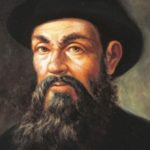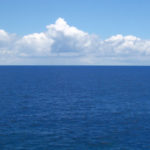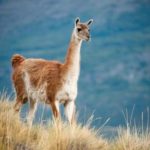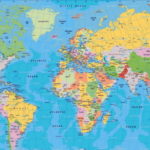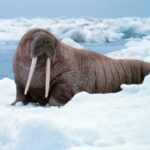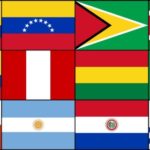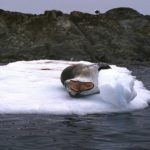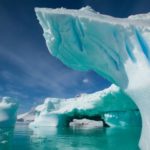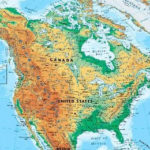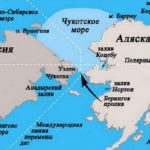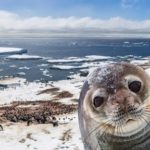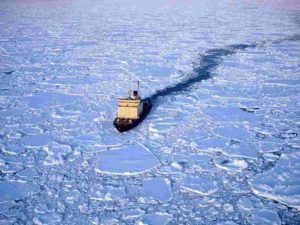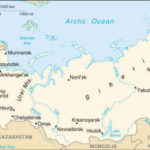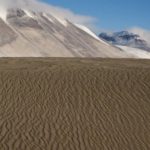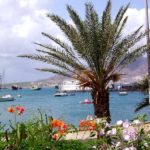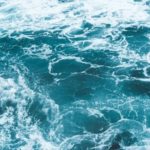Islands of Tierra del Fuego
 Tierra del Fuego, this is a harsh place, once a single whole with Antarctica, these are islands in the very south of South America. Where America ends. Further behind the Drake Strait, only the ice of Antarctica. But oddly enough, man always attracted the edge of the earth. The first European to come here in 1520 was Fernan Magellan. Then, sailing the unknown strait, the Portuguese sailors saw on the port side of the land, on which there were smoke.
Tierra del Fuego, this is a harsh place, once a single whole with Antarctica, these are islands in the very south of South America. Where America ends. Further behind the Drake Strait, only the ice of Antarctica. But oddly enough, man always attracted the edge of the earth. The first European to come here in 1520 was Fernan Magellan. Then, sailing the unknown strait, the Portuguese sailors saw on the port side of the land, on which there were smoke.
This strait, over 400 miles long, was mapped on the map called the Strait of Magellan, and the land was the Land of Smokes. Later, King Charles 1 said that there is no smoke without fire, and ordered to call this place the Land of Lights. In 1578, the Dutchman Francis Drake, during his world tour, reached the southernmost point of this land, which was named after the Dutch city of Horn, from where this expedition began. Later this place became known as Cape Horn.
Later it was established that this is not one land, but an entire archipelago of 30 large islands and several dozen small ones. The area of the archipelago is 72520 square kilometers. The climatic conditions in the archipelago leave much to be desired. Although the temperature in these regions in the summer is plus 10-12 degrees, and in the winter to minus 5 degrees, but because of the strong storm winds and the huge amount of precipitation, these places are poorly suitable for life. About 300 days a year here are overcast and rainy.
But, nevertheless, this land was inhabited even for a long time before the arrival of Europeans to this region, despite the harsh climatic conditions. Here lived several tribes of Indians. Where they appeared from here is unknown, but the English scholar Charles Darwin who studied this region 200 years after Magellan revealed that they were similar to the tribes inhabiting Australia and Oceania. Moreover, the language of the Indians in Tierra del Fuego is similar to the language of the Australian natives. How they could be here is a mystery of history. These were truly primitive tribes who only recognized the fire. Lived in antediluvian huts, ate fish, dressed in hides. But they were very adapted to local conditions. Half-naked, warming themselves by the fires, they felt great. Whereas the first Spanish colonists who landed on these shores in 1580 almost during the very first winter all died from the cold. Of the 300 people left alone, who found refuge with the Indians.
The Indians would have lived in Tierra del Fuego for centuries if the pale-faced ones had not come. These places attracted immigrants from Chile, Argentina, as well as from Europe. True, at first they could only be engaged in sheep farming here. White settlers took land from the Indians for pasture, built a ranch. And when, in the 9th century, deposits of gold were found on Tierra del Fuego, prospectors rushed here en masse. They developed mines, built settlements. The Indians could not figure it out, did not understand what private property is, and still hunted where they wanted, often sheep raised here. The colonists, defending their property, announced a real hunt for them. They were shot for 1 pound sterling for one killed, with evidence in the form of a pair of ears cut off by the Indians.
There were of course among the white defenders of the Indians. So the Frenchman Antoine de Tunn, who fought for the rights of the Indians, united several tribes in the struggle, was even declared by the local king Arucan Orely I. But his pale faces were taken three times and deported to Europe. So the struggle did not give any results. The hunting grounds of the Indians were ravaged, the boats on which they fished in the sea were destroyed. Gradually, out of 6,000 Indians, only a few dozen remained.
Difficult conditions and the absence of laws led to the fact that slave labor began to flourish on these lands. Up until 1947, there was a huge prison on this side of the world. The prisoners felled the forest, worked in the mines and practically carried out all the hard work on the island. With their hands, roads were built and all settlements erected, later becoming cities. There is still a narrow-gauge railway that carried prisoners to work.
Years passed, and the Islands of Tierra del Fuego gradually settled down. Now the population of Tierra del Fuego is over 250 thousand people. The whole archipelago since 1881 is divided into two parts. The southern part of Isla Grande and the southernmost city of the Earth – Ushuaia belongs to Argentina. Ushuaia has more than 60 thousand inhabitants. The main part of them are migrant workers.
Everything else under the jurisdiction of Chile, including the most southern settlement of the planet – Puerto Torro on the island of Navarino. In the 90s of the twentieth century, Tierra del Fuego was chosen by international companies producing radio electronics. This is due to low taxes. Workers are attracted here by high wages and benefits.
In the summer, the population of Ushuaia doubles. This is an influx of numerous tourists. The climate here is certainly not resort. But all the cruises to Antarctica start from here, because it’s only 1000 km from here. Well, on the very most on Tierra del Fuego there is something to see.
Throughout the southern part of Tierra del Fuego is a huge National Park. The vegetation here is certainly frail, but there are places where whole groves of evergreen beeches and conifers grow. Among the many islands there are very beautiful and picturesque, with almost uninhabited. Animals throughout the archipelago is not so much. But very interesting places inhabited by penguins. Here you can find large king penguins in natural conditions.
Mostly found are blue fox, guanaco, parrots, hummingbirds and kites – that’s all the fauna. Interestingly, there are very few insects here, but snakes and other reptiles do not exist at all.
